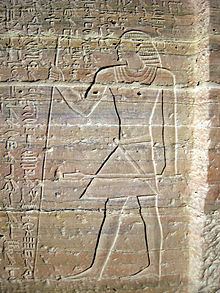Successor possibly Heqaib House Sixth Dynasty of Egypt | Place of burial Qubbet el-Hawa | |
 | ||
Pharaohs Merenre Nemtyemsaf I, Pepi II Neferkare | ||
The Autobiography of Harkhuf is a tomb inscription from Ancient Egypt which is significant to Egyptology studies. Harkhuf was a governor of Upper Egypt in the 23rd century BC. His name is sometimes spelled Herkhuf, Horkhuf, or Hirkhuf.
All that is known of Harkhuf's life comes from the inscriptions in his tomb at Qubbet el-Hawa on the west bank of the Nile at Aswan, near the First Cataract of the Nile.
He was a native of Elephantine. He was appointed governor of the southern part of Upper Egypt and overseer of caravans under the pharaoh Merenre I, third king of the 6th Dynasty. His primary business was trade with Nubia, forging political bonds with local leaders, and preparing the ground for an Egyptian expansion into Nubia. He led at least four major expeditions during his life. On the last expedition, he brought back with him what his correspondence with the young pharaoh Pepi II referred to as a dwarf, apparently a pigmy.
He travelled a considerable distance to a land called Iyam, which probably corresponds to the fertile plain that opens out south of modern Khartoum, where the Blue Nile joins the White. However, Jean Yoyotte thought Iyam was located further north in the Libyan Desert.
The inscriptions in Harkhuf's tomb reflect changes in the Egyptian world view that were occurring during the Late Old Kingdom and the First Intermediate Period, with the person of the king becoming more human and displaying emotions and interests, while commenting on a person leading a moral life by helping his neighbour: I gave bread to the hungry, clothing to the naked, I ferried him who had no boat.
